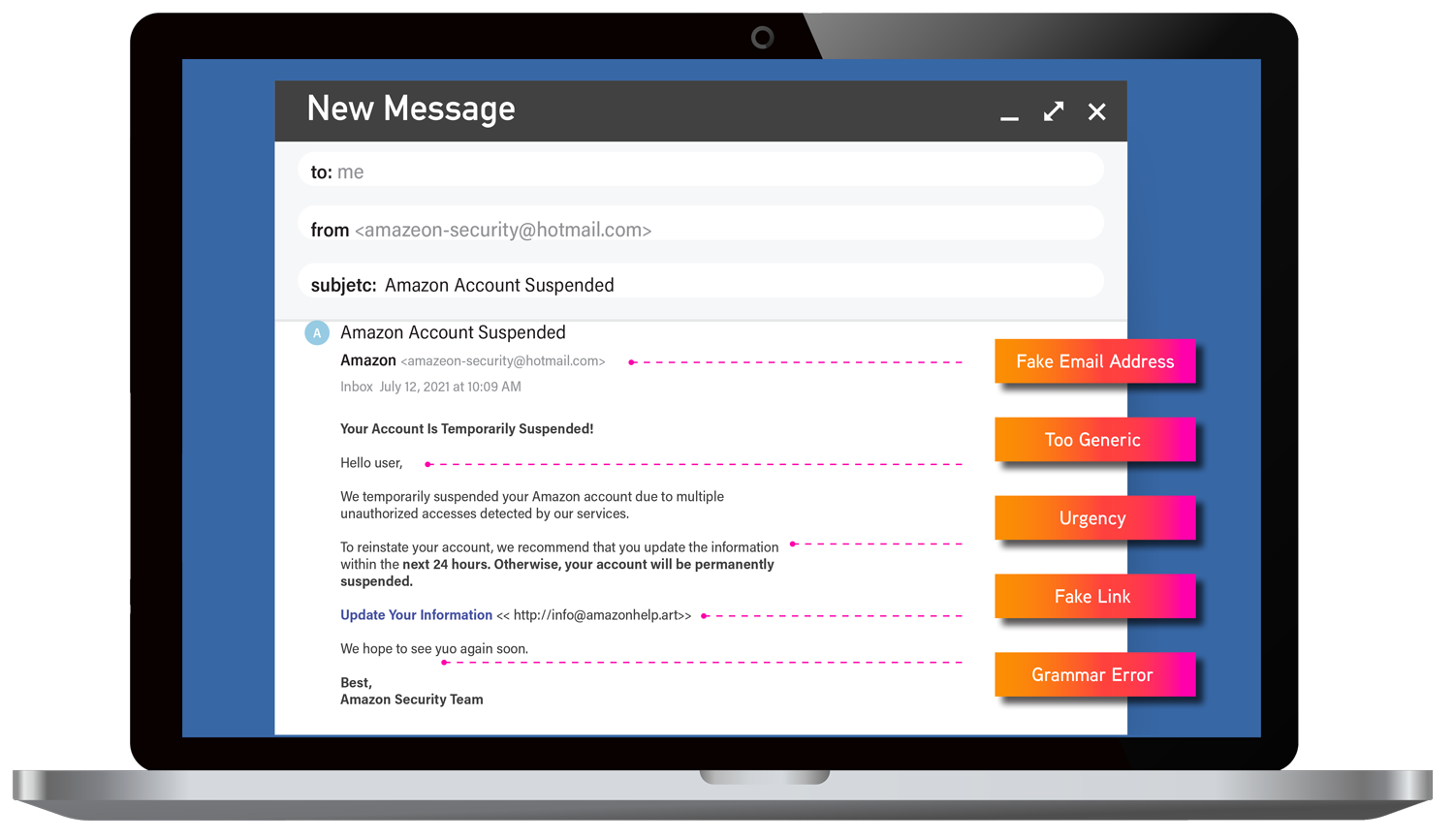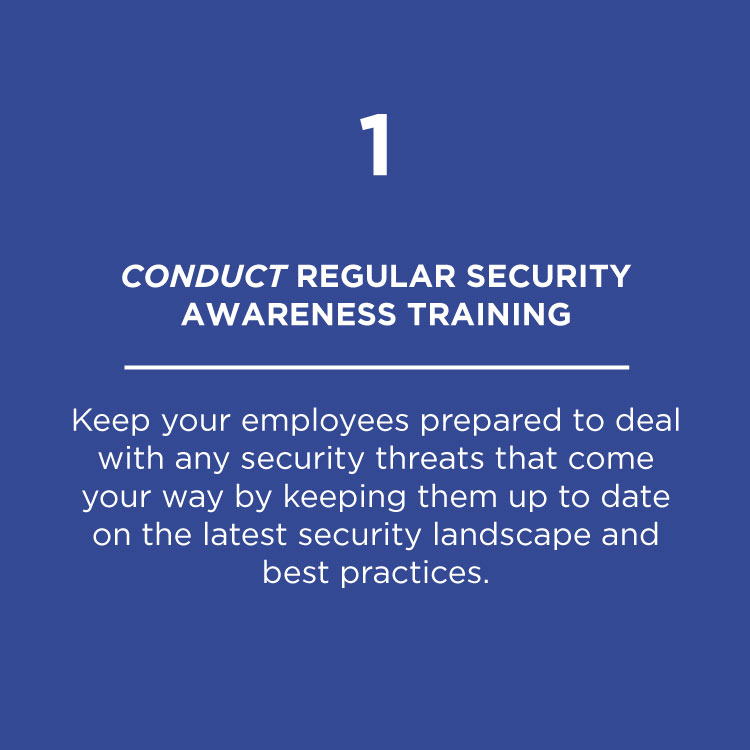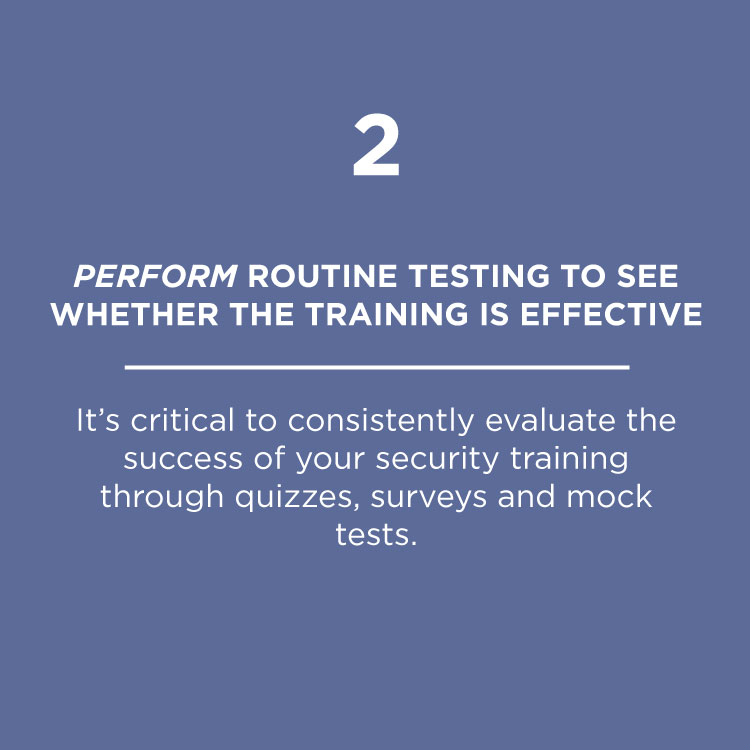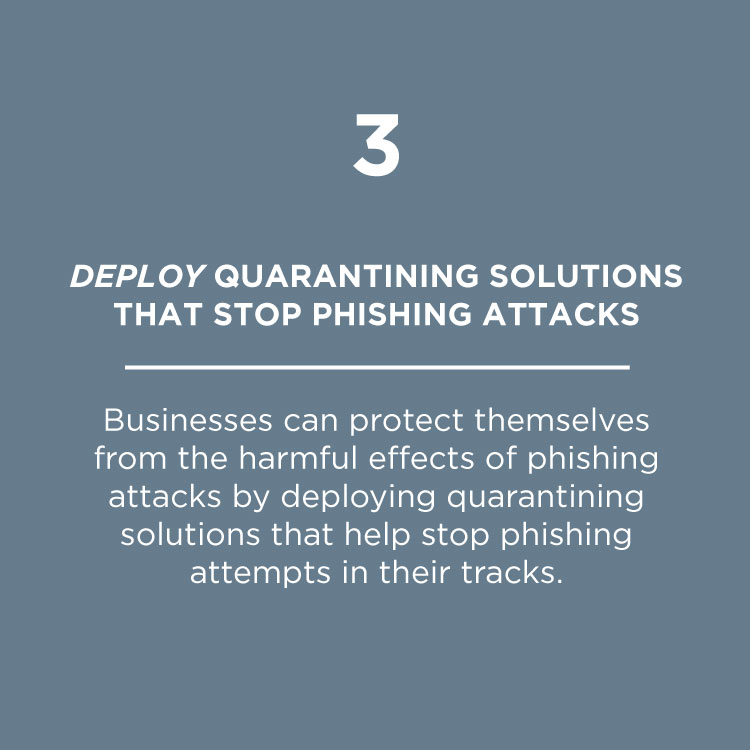PHISHING
What every small business should know about PhishingSMALL BUSINESSES ARE UNDER THREAT FROM A VARIETY OF SOURCES, BOTH INTERNAL AND EXTERNAL.
BUT PHISHING IS THE MOST PRESSING.
STANDARD PHISHING
Standard phishing is the most common type of phishing. These attacks typically involve mass emails sent to large groups of people.
SPEAR PHISHING
A targeted attack aimed at a specific individual or organization, often involving the use of personal information to make the email seem more credible.
WHALE PHISHING
Targets high-ranking executives or other individuals who have access to sensitive information. This kind of attack is more sophisticated as the victims are often tech- savvy.
VISHING
This attack uses phone calls or VoIP (Voice over IP) messages to trick victims into revealing sensitive information.
PHISHING PREVENTION BEST PRACTICES
WATCH FOR OVERLY GENERIC CONTENT
Cybercriminals send a large batch of emails. Look for examples like “Dear valued customer.”
EXAMINE THE “FROM:” EMAIL ADDRESS
The first part of the email address may look legitimate, but the last part might be off by a letter or may include a number in the usual domain.
LOOK FOR URGENCY
“You’ve won! Click here to redeem prize,” or “We have your browser history pay now or we are telling your boss.”
CHECK ALL LINKS
Hover over the link and see whether the link’s description matches with the one implied in the email.
LOOK FOR ERRORS
Notice misspellings, incorrect grammar and odd phrasing. This might be a deliberate attempt to try to bypass spam filters.
CHECK FOR SECURE WEBSITES
Any webpage where you enter personal information should have a url with https://. The “s” stands for secure.
DON’T CLICK ON ATTACHMENTS
Attachments containing viruses might have an intriguing message encouraging you to open them such as “Here is the schedule I promised.”






